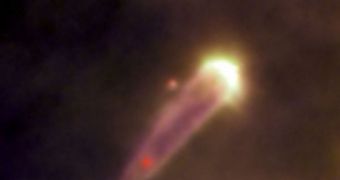According to the conclusions of a new astronomical study, it would appear that many star systems eject potentially-habitable exoplanets from their inner regions. This happens as the systems are still in their infancy, due to interactions between various objects in orbit around the same star.
In this respect, it could be very well be that our own solar system is an oddity. Here, four rocky inner planets and four gas giants live together in relative harmony. Granted, things weren't always this way, but at least the system became stable later on.
In its earliest days, planets such as Jupiter and Saturn made forays into the inner portions of the solar system, while Earth collided with an object the size of Mars, increasing its mass and forming the Moon.
However, astronomers found that other systems may not be as lucky. An international collaboration of experts led by University of Bonn professor Pavel Kroupa found that celestial bodies that have the potential to developed into habitable, rocky planets may be affected by nearby clumps of material.
The latter may either alter the orbit the former takes around the parent star, or may destroy it altogether. In either case, the exoplanets are kicked out or destroyed, leaving very few cases in which they have the ability to develop as Mercury, Venus, Earth and Mars did.
These discoveries were made using an advanced computer model, which the team details in a paper published in the latest issue of the journal Monthly Notices of the Royal Astronomical Society,
“Like most stars, the Sun formed in a cluster, so probably did encounter another cloud of gas and dust soon after it formed. Fortunately for us, this was a gentle collision, so the effect on the disk that eventually became the planets was relatively benign,” Bonn team member Dr. Ingo Thies adds.
“If things had been different, an unstable planetary system may have formed around the Sun, the Earth might have been ejected from the Solar System and none of us would be here to talk about it,” the expert goes on to say.
More often than not, interactions between incompletely-formed planets and large asteroids or other protoplanets may result in the former entering retrograde or highly-elliptical orbits that are inherently unstable. Chances of them being ejected from the system then go through the roof.
In such a scenarios, larger, Jupiter-sized giants would eventually kick any other planet out of the system, establishing themselves in orbits close to their parent star. This is what most systems that our most modern planet-hunting telescope observe look like right now.
“We may be on the cusp of solving the mystery of why some planetary systems are tilted so much and lack places where life could thrive,” professor Kroupa explains.
“The model helps to explain why our Solar System looks the way it does, with the Earth in a stable orbit and larger planets further out. Our work should help other scientists refine their search for life elsewhere in the Universe,” he concludes.

 14 DAY TRIAL //
14 DAY TRIAL //